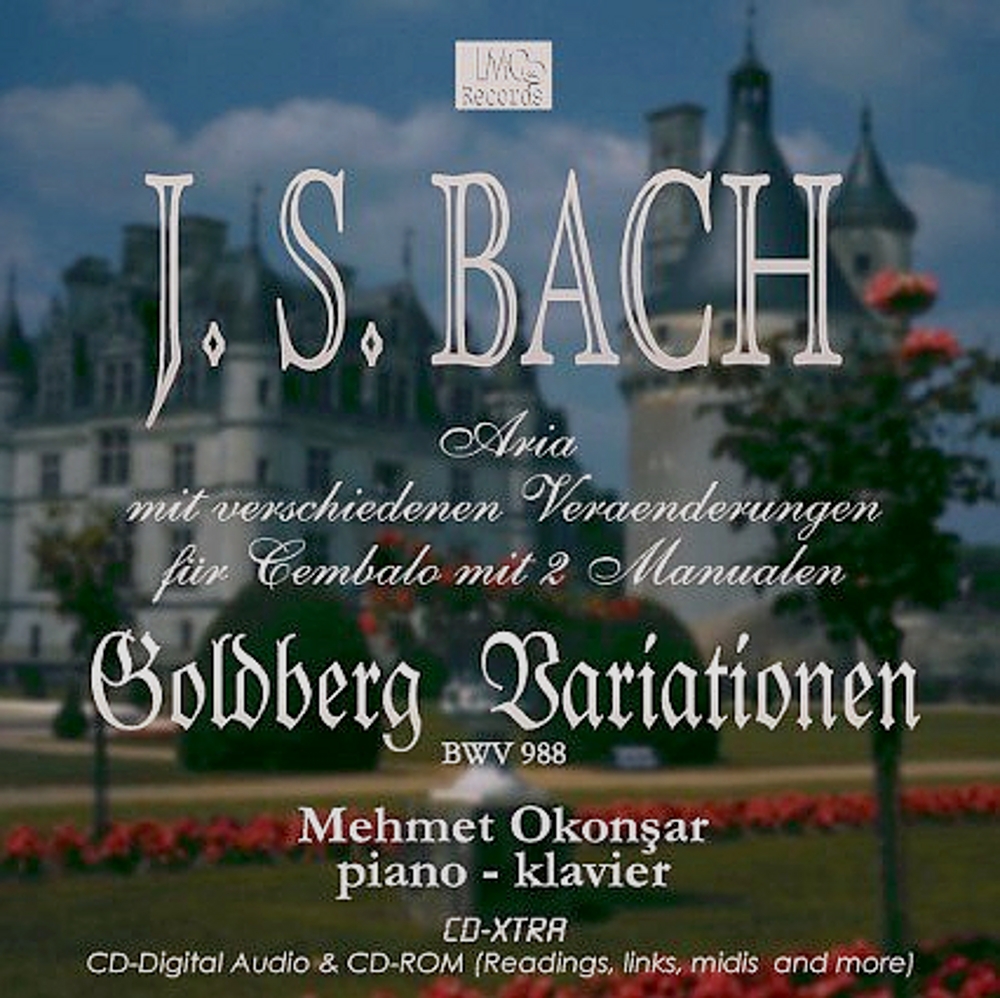
Johann Sebastian Bach
Goldberg Variations BWV 988

|
The Goldberg Variations is often displayed as an unsurpassed model for contrapuntal composition. While the perfection of the canons is often emphasized by music theorists, the most important aspect of the work, in my mind, is the instrumental extravaganza. Those variations are the "Etudes d'éxecution transcendantale" of their time. They expand and raise the harpsichord virtuosity to levels never heard before. In this work, J.S. Bach has written the most fantastic and outrageous keyboard idioms of his time and he has pushed existing ones to their limits. Visionary hand choreographies (Var.5, 20, 26), double thirds and sixths (Var.23) double trills (Var. 28), alternating chords (Var.29) and many other keyboard acrobatics make this work one of the greatest instrumental achievements of musical history together with the above-mentioned studies by Liszt, the "Gaspard de la Nuit" or the "Three Movements from Petrouchka". The contrapuntal music writing styles (fugues and canons) have acquired an aura of seriousness and almost religiousness during the romantic epoch. After having been forgotten for a century or so, when J. S. Bach was "discovered" by Mendelssohn, he was seen as the musician par-excellence for the salvation of romantically tormented souls. The prominence of J.S. Bach's church-commissioned works overshadowed his profane and purely instrumental works. In all his compositions, it has been a "tradition" to seek the Divine Signs and connections to the Scriptures. This so called tradition led to such insanities as the "research" of divine numerology in his fugues, the "discovery" of the Holy Trinity when a voice jumps a step of third and other ridiculous things. The religious sensibility in his Masses, Cantatas and Passions has been extrapolated to all his other works. Religion, for J. S. Bach, was a "normal" and "natural" part of his life. He was not just employed by religious authority, but he was a man who deeply and sincerely practiced Lutheranism. Yet he was a true composer in the sense that he had the aspirations and the artistry to compose a variety of music. Although J. S. Bach never composed operas, probably because no one hired him to do so and because such works might have offended his Lutheran community, he was certainly capable of doing so. His operas might have rivaled those of Haendel and Rameau. Similarly it is wrong to view Bach's fugues and canons as "pure intellectual music." The joy is not so much in the analysis of their forms, but in listening and performing them. After centuries of homophonic music writing we have forgotten how simply enjoyable are the musical forms of canons and fugues. By captivating the mind with an attractive theme and leading it through contrapuntal mazes, one can "almost easily" achieve, if not good, at least a decent music. When the Bach family gathered on Christmas evenings they sang improvised canons to have fun. I believe that music analysts who stress the perfectionism of the counterpoint in Bach's canons are missing a point. Today, it is possible to produce the most complicated counterpoint in less than a second with a programmed machine. It is a simple matter of following rules to construct a perfect canon. The genius of J. S. Bach is revealed in the places where he deviated from the rules. Every composer knows (even if some would never admit it) that the most difficult compositions are the "free" ones. A simple melody (an "aria" for example) can be much more difficult to compose than a 6 voice fugue. This is why I find that the free variations (Var.1, 2, 4, 5, 7, 8, 11, 13, 14, 16, 17, 19, 20, 23, 25, 26, 28, 29) reveal more of the composer's genius. Still more striking examples are the Aria and variations 13 and 25. It is also worth noting how those slow variations, number 13 and the "adagio" number 25 are placed in the whole set. The set is divided into two main sections: Aria - Variations. 15 and Variations 16 to Aria (da capo). The numbers 13 and 25, which are the emotional climaxes of the whole work, are placed in strategically symmetrical positions. For the framework of the composition Bach chose to include one interlude and one canon, based on the harmonic framework of the previously composed aria, because that seemed to him to be the most entertaining form. There is no shame and should be no fear in using the word "entertaining" here. In the hands of J. S. Bach, an entertaining form such as a canon would assuredly turn out to be a masterwork. The Goldberg Variations stands high in the history of keyboard music, alongside the innovative studies of Chopin and Liszt or Igor Stravinsky's Petrouchka, for its a revolutionary instrumental accomplishment. Similarly to works like the Studies by Chopin and Liszt or the Petrouchka Suite by Stravinsky, The Goldberg Variations is one of this kind of music which extends and revolutionize the instrumental idioms of its time.
|
|||||||||
| |
|||||||||
| |
|||||||||
|
|
|||||||||
|



